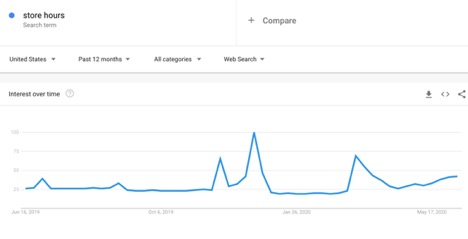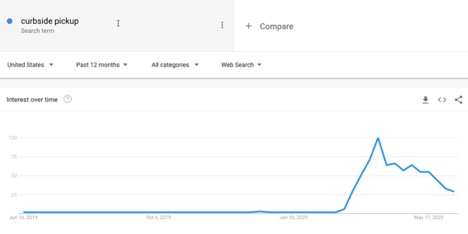30-second summary:
- The world is now starting to open back up and we are marketers are adjusting to how we can be effective in this new reality.
- Search data can help inform the strategic decisions around store locations, hours, payment methods and so much more so that your business can make smarter and more informed decisions on how to be successful.
- As marketers struggle to grasp the magnitude of changes, Jason Tabeling highlights five Google Trends that can serve as immediate insights.
We all already know that the impact that COVID-19 is having on the world. We have all been under stay-at-home orders for about 90 days. The world is now starting to open back up and we are marketers are adjusting to how we can be effective in this new reality. It’s really hard to grasp the magnitude of changes that are occurring around us right now and it will take some time and perspective for us to truly understand. Search data is a powerful tool that can help us understand how consumers are feeling and reacting to situations. Here are five Google Trend charts that I think help us zoom out a bit and understand some trends that I believe will change the way we operate forever.
1. Retail vs Digital businesses
The world of traditional retail is changing forever. Here is a comparison between Instacart and Whole Foods. Now I know you can say Whole Foods is really Amazon and ecommerce, but that’s sort of the point. Every business is a digital business even if those particularly aren’t owned directly by Amazon. Quickly each business has had to move to a digital model and as you can see from this chart Instacart had a massive surge, has since tailed off, but has significantly closed the gap on Whole Foods. Instacart and other like businesses (Ex. Chewy or Doordash) now have a customer base that is much more comfortable in a digital world and won’t be going back.

2. Store hours
If and when a store is open is a big deal during COVID-19. Many stores, restaurants, and other businesses were forced closed. Some were deemed essential, and as states re-open are deciding when they should open. This leaves consumers searching to find out how their favorite shops are responding.
For businesses and marketers, this makes keeping your Google My Business (GMB) and other Location Data Management sources (Facebook, Yelp, Apple Maps) up to date. Knowing consumers are seeking information and relying on this information to take action is key. Google has even created new tags like, “Temporarily Closed” to help businesses communicate with their customers easier. Making sure this data is accurate and up to date has always been important and is just magnified by the uncertainty this situation has created for all businesses and consumers.

3. “Contactless”
Check a Google Trends chart for anything “contactless” and you will see a very similar graph. The growth of all things contactless has spiked, delivery, payments, and pickup. This further accelerates the digital revolution. Cash has always been dirty, and in these times people are especially cautious. According to Times article paper money can transport a live flu virus for up to 17 days. This data point, plus all the CDC and WHO recommendations make anything contactless of interest for consumers.
4. “Curbside”
Curbside is very similar to “Contactless.” Both demonstrate the new ways consumers want to interact with brands. Having this type of pickup option allows consumers the ability to shop with their favorite brands, but not take the incremental risk of going inside the store. Consumers are looking for ways to continue with some sort of normal behavior, get out of their house, and not have to wait for shipping.
Best Buy for example had a curbside pickup at 100 stores in December and quickly accelerated to all 1,200 stores during the pandemic. Much like Contactless, curbside wasn’t even a term consumers were using until recently and we don’t expect it to go away any time soon.

5. Remote work
The way people approach their jobs has been forever changed. As you can see from the chart below remote work has been steadily growing since 2004, but has reached a peak over the last few months. This is especially interesting when comparing it to unemployment searches, which is a very sad side effect of the economy shut down. I’m hopeful that for those of us in digital marketing we can see this as a growth opportunity for talent across the country and world to work together to help make marketing stronger for these brands. To help them drive into a digital age that was a differentiator just 90 days ago, and has now been rushed into mandatory status for survival.
Conclusion
So much of our world has been changed forever. It is our job as marketers to help leverage the tools at our disposal. This is especially true for search engine marketing. Where we have the ability to understand how customers are thinking about our brands and the experiences they expect from us just be understanding how they search. This data is not only helpful for search campaigns but business strategy as well. Search data can help inform the strategic decisions around store locations, hours, payment methods and so much more so that your business can make smarter and more informed decisions on how to be successful.
The post Five Google Trends charts that show the impact of COVID-19 appeared first on Search Engine Watch.
from Search Engine Watch https://ift.tt/2ZUiQ0l

No comments:
Post a Comment